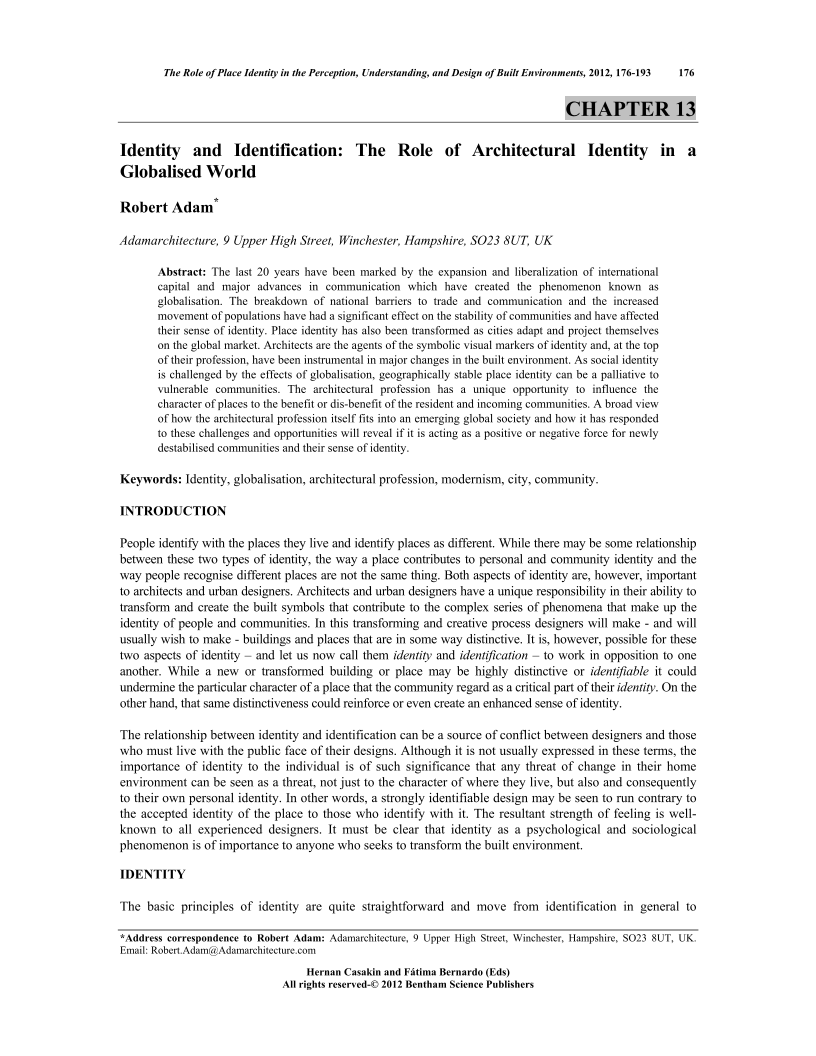Identity and Identification: The Role of Architectural Identity in a Globalised World

- By Robert Adam1
-
View Affiliations Hide Affiliations1 Adamarchitecture, 9 Upper High Street, Winchester, Hampshire, SO23 8UT, UK
- Source: The Role of Place Identity in the Perception, Understanding, and Design of Built Environments , pp 176-193
- Publication Date: July 2012
- Language: English
Identity and Identification: The Role of Architectural Identity in a Globalised World, Page 1 of 1
< Previous page | Next page > /docserver/preview/fulltext/9781608054138/chapter-13-1.gif
The last 20 years have been marked by the expansion and liberalization of international capital and major advances in communication which have created the phenomenon known as globalisation. The breakdown of national barriers to trade and communication and the increased movement of populations have had a significant effect on the stability of communities and have affected their sense of identity. Place identity has also been transformed as cities adapt and project themselves on the global market. Architects are the agents of the symbolic visual markers of identity and, at the top of their profession, have been instrumental in major changes in the built environment. As social identity is challenged by the effects of globalisation, geographically stable place identity can be a palliative to vulnerable communities. The architectural profession has a unique opportunity to influence the character of places to the benefit or dis-benefit of the resident and incoming communities. A broad view of how the architectural profession itself fits into an emerging global society and how it has responded to these challenges and opportunities will reveal if it is acting as a positive or negative force for newly destabilised communities and their sense of identity.
-
From This Site
/content/books/9781608054138.chapter-13dcterms_subject,pub_keyword-contentType:Journal -contentType:Figure -contentType:Table -contentType:SupplementaryData105

